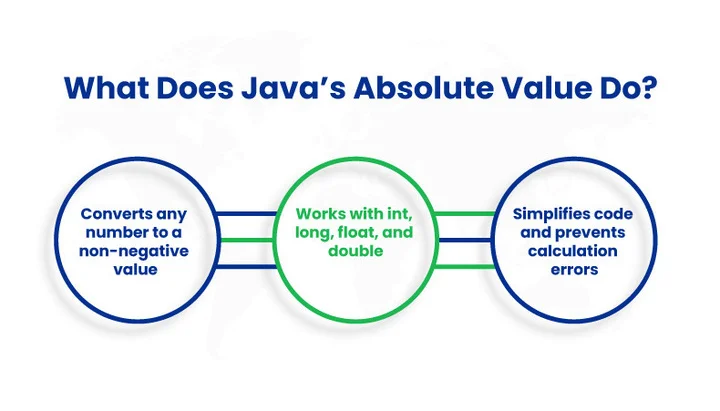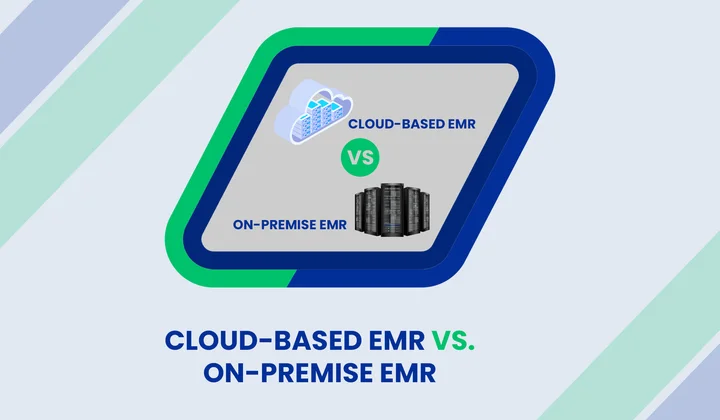Ever tried calculating the distance between two points in your Java program, only to get stuck with a negative number?
Frustrating, right?
That’s exactly where Java’s Math.abs() comes to the rescue.
In Java programming, handling numbers correctly is to accurate computations. One common task is finding the absolute value of a number, its distance from zero, always expressed as a non-negative value. The Math.abs() method in Java provides a direct and efficient way to achieve this.
This method works across different numeric types (int, long, float, double) and ensures consistent results when negative values could otherwise cause issues. For example, when working with calculations like distances, averages, or dataset comparisons, it guarantees a clean, non-negative output.
Java has been one of the top 3 most popular programming languages for over 20 years, according to the TIOBE Index, making understanding its core functions like Math.abs() essential for millions of developers worldwide.
However, there are edge cases that developers must be aware of. For instance, calling Math.abs(Integer.MIN_VALUE) doesn’t return the expected positive result due to overflow. Knowing such limitations is crucial to avoiding hidden bugs.
In this blog, we’ll cover the syntax, usage, and limitations of the Java absolute value function, along with examples to help you use it effectively in your projects.
Table of Contents
So let’s begin by exploring the concept of Java’s absolute value function!
What Exactly is Java’s Absolute Value Function?
The absolute value function in Java returns the non-negative form of a number by removing its sign. This is especially useful in scenarios where only the magnitude matters, such as distance calculations, comparisons, and data analysis. In Java, this functionality is provided by the built-in Math.abs() method from the java.lang.Math class.

Instead of manually checking for negative numbers, developers can rely on Math.abs() to ensure consistent results across different numeric types.
Core Points About Java’s Absolute Value Function
- Accessible via Math.abs(): Part of the standard Java Math library.
- Supports multiple data types: Works with integers, floating-point numbers, and long values.
- Prevents errors in calculations: Ensures consistency across different numeric types.
- Simplifies code: Eliminates the need to manually check and convert negative numbers.
- Reliable for complex operations: Useful in large datasets and algorithmic computations.
In addition to making code simpler, Math.abs() lowers the possibility of mistakes in intricate computations.
What is the Syntax and Usage of the Java Absolute Value Function?
The Java absolute value function, accessed using Math.abs(), allows developers to convert any number into its non-negative equivalent. This method is part of the Java Math library and works for multiple numeric types, including integers, longs, floats, and doubles.
Using Math.abs() ensures that negative numbers are handled correctly without the need for manual checks, simplifying calculations and making code more reliable, a critical part of Backend Development Services in Java applications.
General Syntax: Math.abs(value)
- value: The numeric input you want to convert to its absolute value.
- Return type: Matches the type of the input (int, long, float, double).
The major Points to Remember When Using Math.abs()
- Converts negative numbers to positive.
- Positive numbers and zero remain unchanged.
- Supports integers, floating-point numbers, and long values.
- Prevents common calculation errors and simplifies coding logic.
This function is widely used in scenarios where only the magnitude of a number matters, such as mathematical calculations, data analysis, or algorithm design. By applying Math.abs(), developers can write cleaner code that is easy to read, maintain, and debug.
How Do You Use Math.abs() with Integer Values?
In Java, working with integers often involves situations where negative numbers might complicate calculations, such as measuring distances or computing differences. The Math.abs() function provides a simple way to convert any integer into its absolute (non-negative) value, ensuring consistent results in your programs.
For instance, consider a negative integer in your program. Using Math.abs() converts it to its positive equivalent effortlessly:
int number = -25;
int absoluteValue = Math.abs(number);
System.out.println("Absolute value: " + absoluteValue); // Output: 25
In this example, Math.abs() takes the negative integer -25 and returns 25, making it easier to work with values where only magnitude matters. This function can be particularly useful in algorithms, loops, and any scenario where a negative number might cause unintended behavior.
There are a few important aspects to keep in mind when using Math.abs() with integers.
Key Points to Consider
When using Math.abs() with integers, it’s helpful to keep in mind a few important aspects that can affect how you handle values in your program, ensuring your calculations remain accurate and your code stays clean:
- Accepts int type as input.
- Returns a non-negative integer.
- Simplifies calculations in loops, differences, and array indexing.
- Ensures consistent results when comparing or aggregating values.
By using Math.abs(), developers can focus on program logic instead of writing extra code to handle negative cases. This keeps the code cleaner, more reliable, and easier to maintain.
We address two function values in the sections that follow:
How Do You Use Math.abs() with Floating-Point Values?
In Java, floating-point numbers (float and double) are widely used for precise calculations, like measurements, averages, or financial data. Negative values in these contexts can complicate computations, especially when only the magnitude of the number matters.
The Math.abs() function provides a simple way to always obtain the positive equivalent of a floating-point number, making calculations more predictable and consistent.
For instance, using Math.abs() converts it to its positive equivalent effortlessly:
double number = -12.75;
double absoluteValue = Math.abs(number);
System.out.println("Absolute value: " + absoluteValue); // Output: 12.75
In this example, Math.abs() takes -12.75 and returns 12.75, allowing you to perform further calculations without worrying about the sign.
This approach is particularly useful in statistics, scientific computations, and financial applications where magnitude is more important than direction.
Key Points for Floating-Point Values
- Works with float and double types.
- Returns a positive floating-point number.
- Essential for calculations requiring precision, such as averages, distances, or financial computations.
- Helps maintain consistency and avoids errors caused by negative values.
By applying Math.abs() to floating-point numbers, developers can focus on the logic of their calculations rather than manually handling negative values. This small, built-in function guarantees positive results, making programs more reliable and easier to maintain.
Math.abs() ensures that floating-point numbers are always treated as positive, providing consistency and precision in calculations. It’s an efficient and essential tool for any Java program that deals with decimal values.
Worried About Errors In Your Java Calculations? Our experts ensure your backend handles all scenarios correctly
What are the Error Handling Considerations and Limitations of Math.abs() in Java?
While Math.abs() is straightforward and widely used, it has certain edge cases that every Java developer should be aware of, highlighting the importance of QA and testing services. Being aware of these limitations helps you avoid unexpected results in your programs.
To handle these situations effectively, it’s important to understand the specific limitations and edge cases of Math.abs(), which we’ll explore below.
1. Overflow with Integer and Long Values
The most common issue occurs when applying Math.abs() to an Integer.MIN_VALUE or Long.MIN_VALUE. These values don’t have a corresponding positive equivalent in Java’s two’s complement representation, so the result remains negative:
int minValue = Integer.MIN_VALUE; int result = Math.abs(minValue); System.out.println(result); // Output: -2147483648
This can lead to logic errors if you assume the result will always be non-negative.
2. Floating-Point Edge Cases
When dealing with floating-point numbers, Math.abs() also has a couple of quirks:
System.out.println(Math.abs(-0.0)); // Output: 0.0 System.out.println(Math.abs(Double.NaN)); // Output: NaN
- -0.0 is treated as 0.0, which usually isn’t an issue but can affect certain equality checks.
- NaN (Not-a-Number) remains NaN, so you’ll need additional checks if your program must handle invalid floating-point results.
What are the Limitations to Remember?
The following are some of the limitations to keep in mind when using Math.abs():
- Integer.MIN_VALUE and Long.MIN_VALUE cannot be converted to positive numbers.
- NaN input returns NaN.
- -0.0 is treated as 0.0.
- Works only with Java primitive numeric types, not with custom numeric classes.
By keeping these edge cases in mind, you can use Math.abs() safely without unexpected behavior. For situations that require handling extremely large values or precise decimal operations, alternatives like BigInteger.abs() or BigDecimal.abs() are better suited.
What are the Alternatives to Using Math.abs() in Java?
While Math.abs() is the most common way to calculate absolute values in Java, it’s not the only approach. Developers can also use conditional statements, the ternary operator, or even bitwise operators, depending on the situation. These alternatives give flexibility in terms of readability, performance, and control over implementation.
To better understand their differences, let’s look at a quick comparison of these methods:
| Method | Pros | Cons |
|---|---|---|
| Conditional Statements | Very clear and beginner-friendly | Verbose, requires more lines of code |
| Ternary Operator | Short, compact, and easy for simple logic | Less readable for beginners in long chains |
| Bitwise Operators | High performance in low-level scenarios | Complex, hard to read, rarely needed |
Frequently Asked Questions (FAQs)
2. Can Math.Abs() Return A Negative Number In Java?
In most cases, the Math.abs() method in Java always returns a non-negative value. It is specifically designed to convert negative numbers into their positive equivalents.
However, there is one exception:
- When applied to an Integer.MIN_VALUE or Long.MIN_VALUE, the result is still negative.
- This happens because these values cannot be represented as positive numbers within the range of their respective data types, which leads to an overflow.
3. Is Math.Abs() Faster Than Using An If-Else Check In Java?
Yes, in most scenarios Math.abs() is optimized by the Java Virtual Machine (JVM) and performs at the same speed or faster than a manual if-else check. Beyond performance, using Math.abs() also makes the code more readable and less error-prone compared to writing custom conditional logic. Developers typically prefer Math.abs() for both reliability and clarity.
Conclusion
Using Math.abs() makes handling absolute values in Java simple and effective for most situations. However, you should watch out for cases like Integer.MIN_VALUE or floating-point precision. In these situations, you can combine Math.abs() with validation checks or use BigInteger.abs() and BigDecimal.abs() for more accurate results.
The key to working with absolute values in Java is choosing methods that balance clarity, efficiency and maintainability. You can deal with current problems and create solutions that are dependable and flexible for the future by remaining adaptable and receptive to different ideas. This is an essential part of effectiv software development solutions
Confused About Implementing Java Functions Efficiently? Our Team guides you to clean, reliable code.








Share your thoughts about this blog!